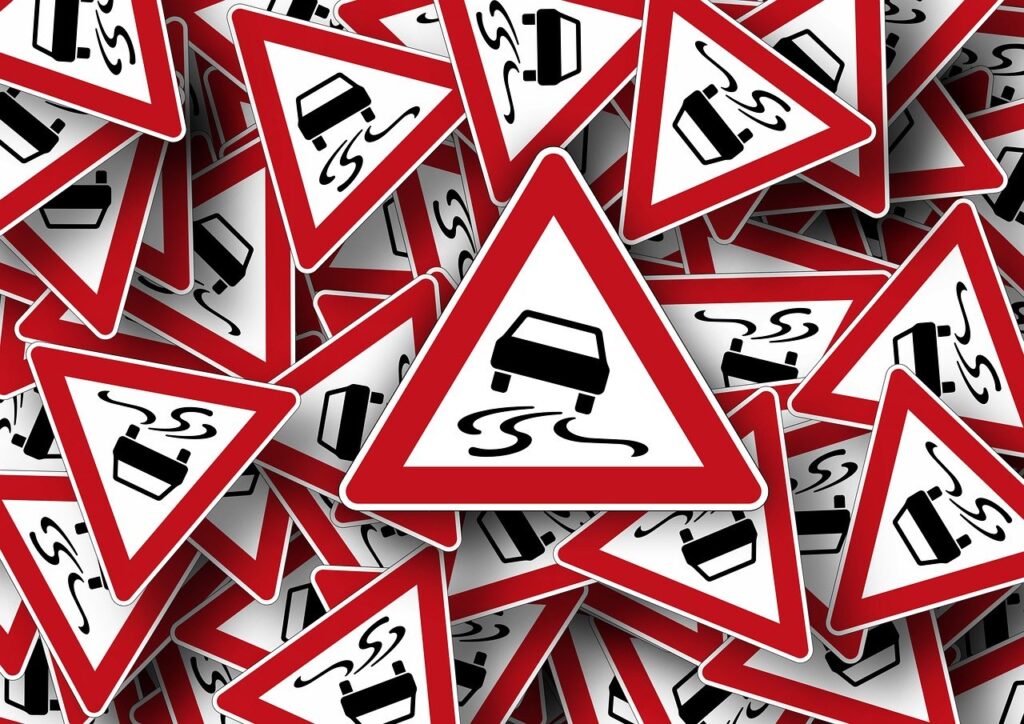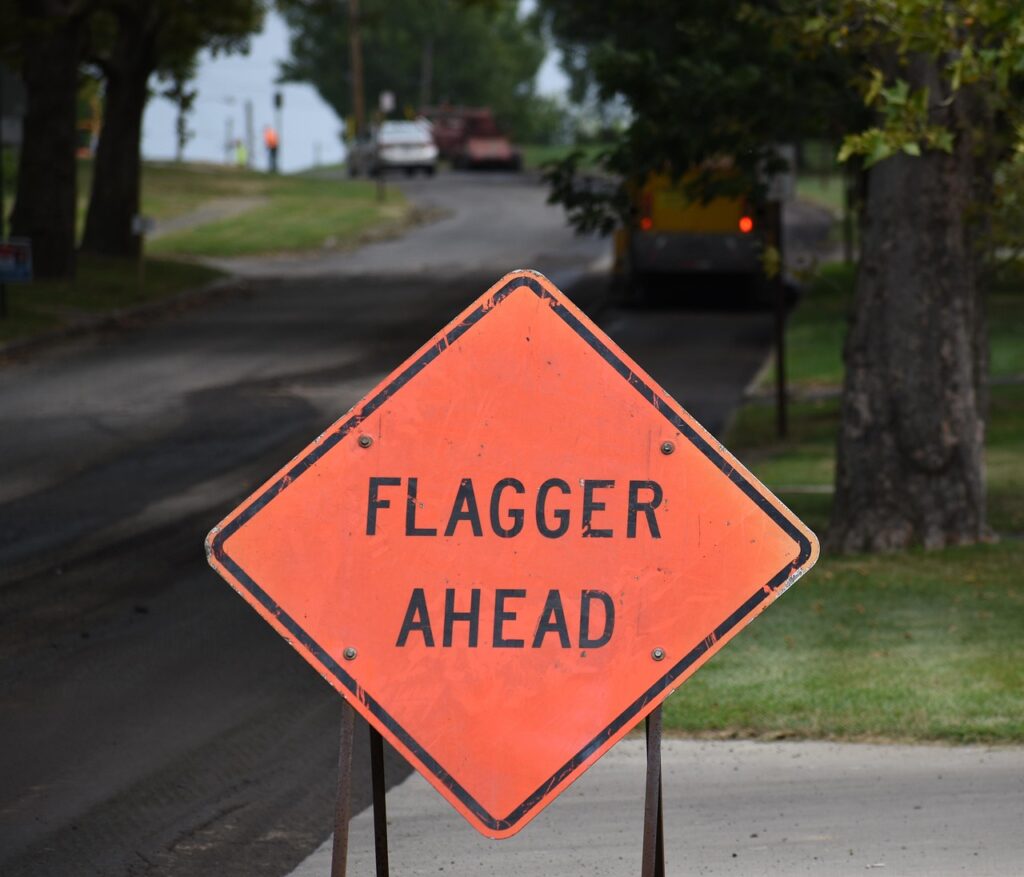The intricate network of American roadways is largely governed by a silent, universal communicator: road signs. These essential visual cues are meticulously designed to inform drivers, facilitate seamless traffic flow, and, most critically, enhance safety for all road users. Their fundamental purpose is to demystify complex driving scenarios, providing instantaneous information to prompt correct and timely actions. Yet, some road signs inadvertently introduce confusion, perplexing even experienced drivers and traffic safety experts.
This ambiguity is not a mere inconvenience; it can lead to significant misunderstandings of basic driving regulations, potentially escalating into hazardous situations. When driving instructors—foremost authorities on safe driving—admit to struggling with certain signs, it highlights a considerable communication gap for the average motorist. Until these less-than-clear signs undergo necessary revisions, the onus falls on individual drivers to comprehend their subtleties. This comprehensive guide, informed by insights from driving instructors and official documentation, seeks to clarify some of the most puzzling signs encountered by American drivers, equipping you for smarter, safer journeys.
Our goal is to offer detailed explanations of these confusing signs, breaking down their meanings and outlining appropriate driver actions. We will delve into specific instances where a sign’s interpretation might diverge from initial assumptions, providing actionable advice for confident navigation. By understanding the core principles and specific instructions tied to these frequently misunderstood indicators, you can not only sharpen your driving skills but also contribute to a more secure and predictable driving environment for everyone. Let’s embark on this journey to decode these perplexing road signs.

1. **Left Turn Yield on Green**
It often surprises drivers that a solid green light doesn’t always grant immediate right-of-way. The “Left Turn Yield on Green” sign exemplifies this, frequently causing subtle yet dangerous driving errors. This sign typically appears at busy intersections where multiple lanes of opposing traffic separate a left-turning vehicle from its path, fundamentally altering the conventional understanding of a green light for left turns.
John Svensson, former president of the Driving School Association of the Americas, clarifies, “a solid green does not mean go. It means you may proceed only if safe to do so.” This is critical when turning left against oncoming vehicles. Despite a green signal, drivers are legally bound to confirm the intersection is entirely clear of opposing traffic—including vehicles moving straight or turning right—before turning. Svensson also addresses a common misconception: “It is incumbent on every driver to make certain that the driver required to give up the right of way is indeed doing so and proceed only when safe.”
Therefore, encountering “Left Turn Yield on Green” requires drivers to reduce speed, thoroughly scan the intersection, and position their vehicle securely. Only once all lanes are unequivocally clear of conflicting traffic should the turn be executed. This prudent approach ensures the “yield” aspect is fully honored, averting accidents and fostering safer traffic flow. Vigilance is key, and road safety demands collective responsibility.
Read more about: Marilyn Monroe: A Reassessment of a Life Defined by Stardom, Struggle, and Enduring Iconography
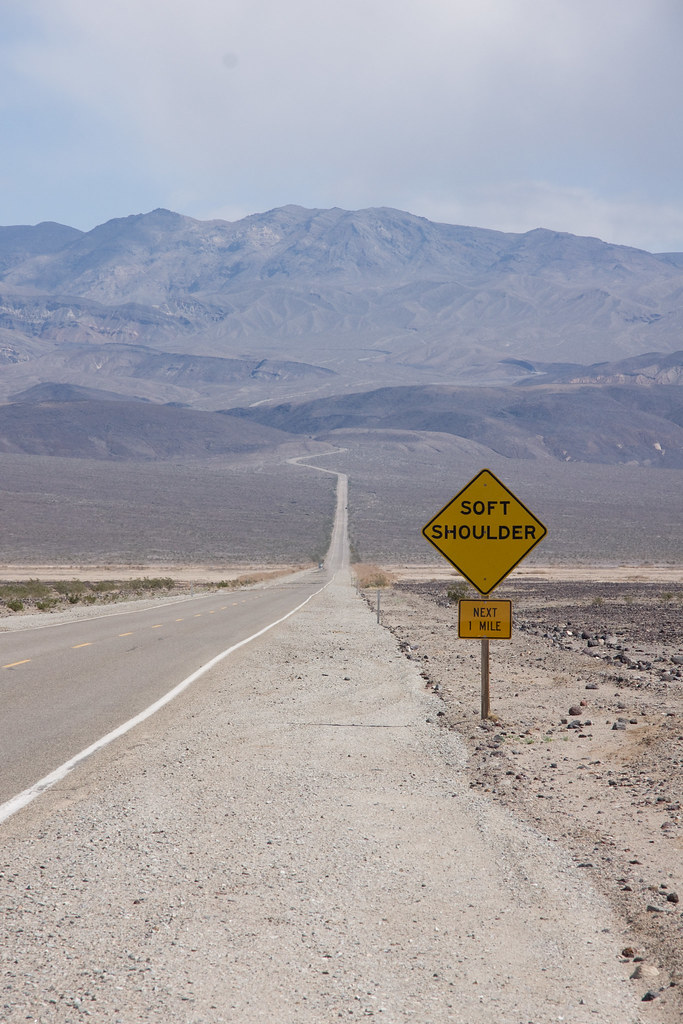
2. **Soft Shoulder**
The “Soft Shoulder” sign is one of three warnings indicating unusual conditions at the road’s edge. While “no shoulder” or “low shoulder” might be readily understood, “soft shoulder” often confuses drivers. It warns that the ground directly beside the paved road is not as firm or stable as usual, often due to environmental factors like spring thaw or recent construction where the ground hasn’t fully settled.
A “soft shoulder” means the terrain is more yielding, potentially lacking structural integrity to support a vehicle’s weight without collapsing. For drivers, the practical implication is significant: driving off the paved roadway onto a soft shoulder can be hazardous. A vehicle, especially a heavier one, might sink, lose traction, or destabilize, potentially becoming stuck and creating a roadside impediment.
Therefore, when a “Soft Shoulder” sign is observed, drivers should proceed with extreme caution and, whenever feasible, avoid driving onto or partially over the shoulder. Maintaining strict lane discipline and preparing for hazards is paramount. If stopping is absolutely necessary, do so with utmost care, visually assessing ground condition if possible, and stopping only if safe for the briefest duration.
Read more about: Tire Specialist’s ‘Crucial’ Tips: Double Your Tire Life Without Ever Buying a More Expensive Brand
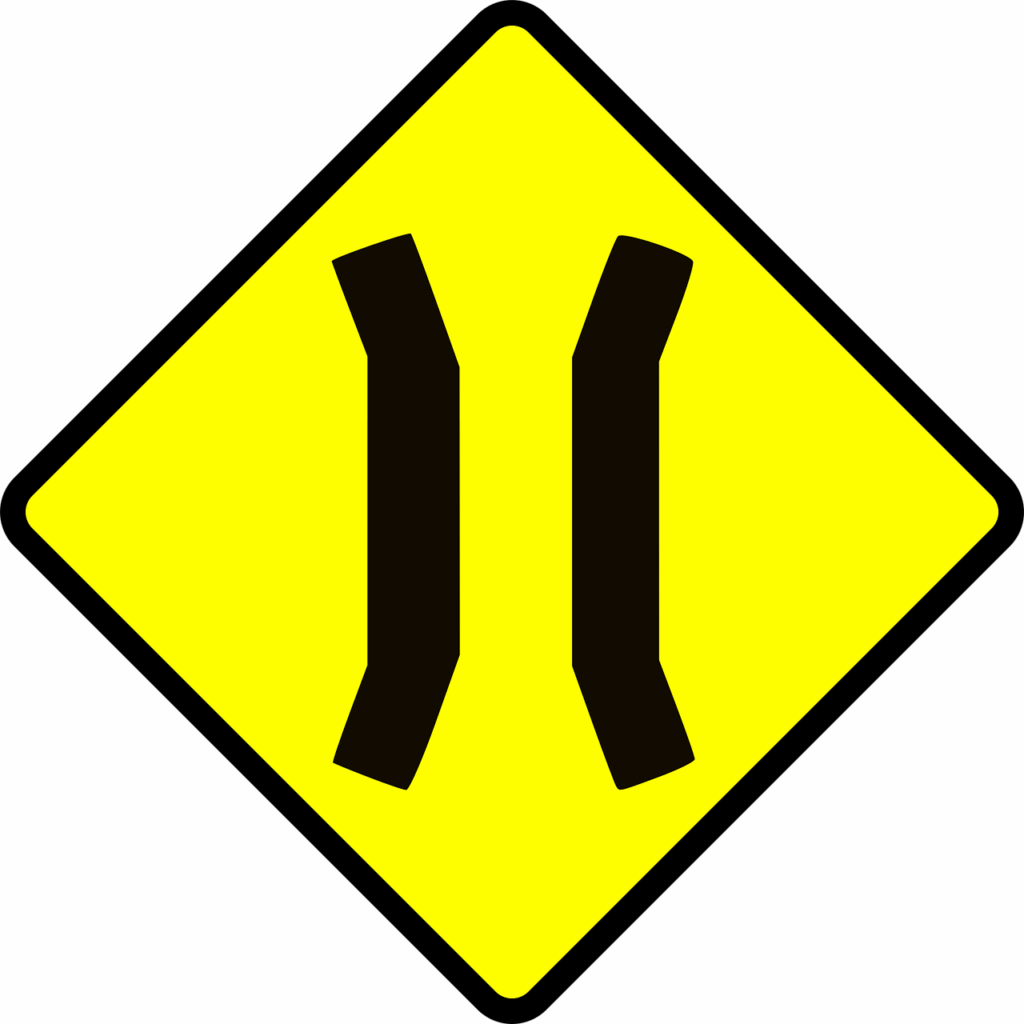
3. **Narrow Bridge**
A “Narrow Bridge” sign provides indispensable advance warning, allowing drivers to prepare for a challenging road section. As per the MUTCD, this sign explicitly cautions that drivers are approaching a bridge with a width narrower than the preceding road. This width reduction can be considerable, demanding heightened awareness and precise vehicle control, especially for wider vehicles like trucks, RVs, or those towing trailers.
The primary concern is diminished clearance. Drivers must confirm their vehicle’s total width, including any towed load, will safely clear bridge elements. Misjudging this clearance risks vehicle or bridge damage, and potentially severe accidents. Beyond width, narrow bridges complicate speed and lane positioning; drivers should anticipate reducing speed considerably.
Maintaining a central lane position is crucial, and drivers must be ready to adjust speed and position for oncoming traffic. The objective is to minimize side-swipes or collisions in confined spaces. Correctly interpreting this sign allows drivers to proactively evaluate vehicle dimensions, adjust speed, and maintain optimal control, ensuring safe passage for all.
Read more about: Ready to Ride? 14 Epic Used Mountain Bike Deals and Smart Buys Just Waiting for You!
4. **Flagger Ahead**
The “Flagger Ahead” sign, an orange diamond, alerts drivers to a human traffic controller. This sign is almost exclusively used in construction or work zones, indicating altered traffic flow managed manually. The flagger’s main responsibility is to ensure safe, orderly vehicle movement through areas where lanes are temporarily closed.
Upon seeing this sign, drivers understand a worker with a “STOP” and “SLOW” paddle (or flag) directs traffic. These individuals alternate vehicle flow through single open lanes, often where construction is active. Flagger signals override permanent traffic lights; thus, drivers must give undivided attention and promptly obey all instructions. Disregarding signals can cause serious accidents, as flaggers manage complex situations and safeguard all personnel.
Correctly responding to a “Flagger Ahead” sign is a legal obligation and essential for safe driving in construction zones. Drivers should maintain a generous following distance to react swiftly. Patience is vital, as delays are inherent to work zones. By recognizing this sign and strictly adhering to instructions, drivers contribute to efficient and safe road work, protecting themselves and those improving infrastructure.
Read more about: Beyond the Basics: Unraveling America’s Most Misunderstood Traffic Signs and What They Really Mean
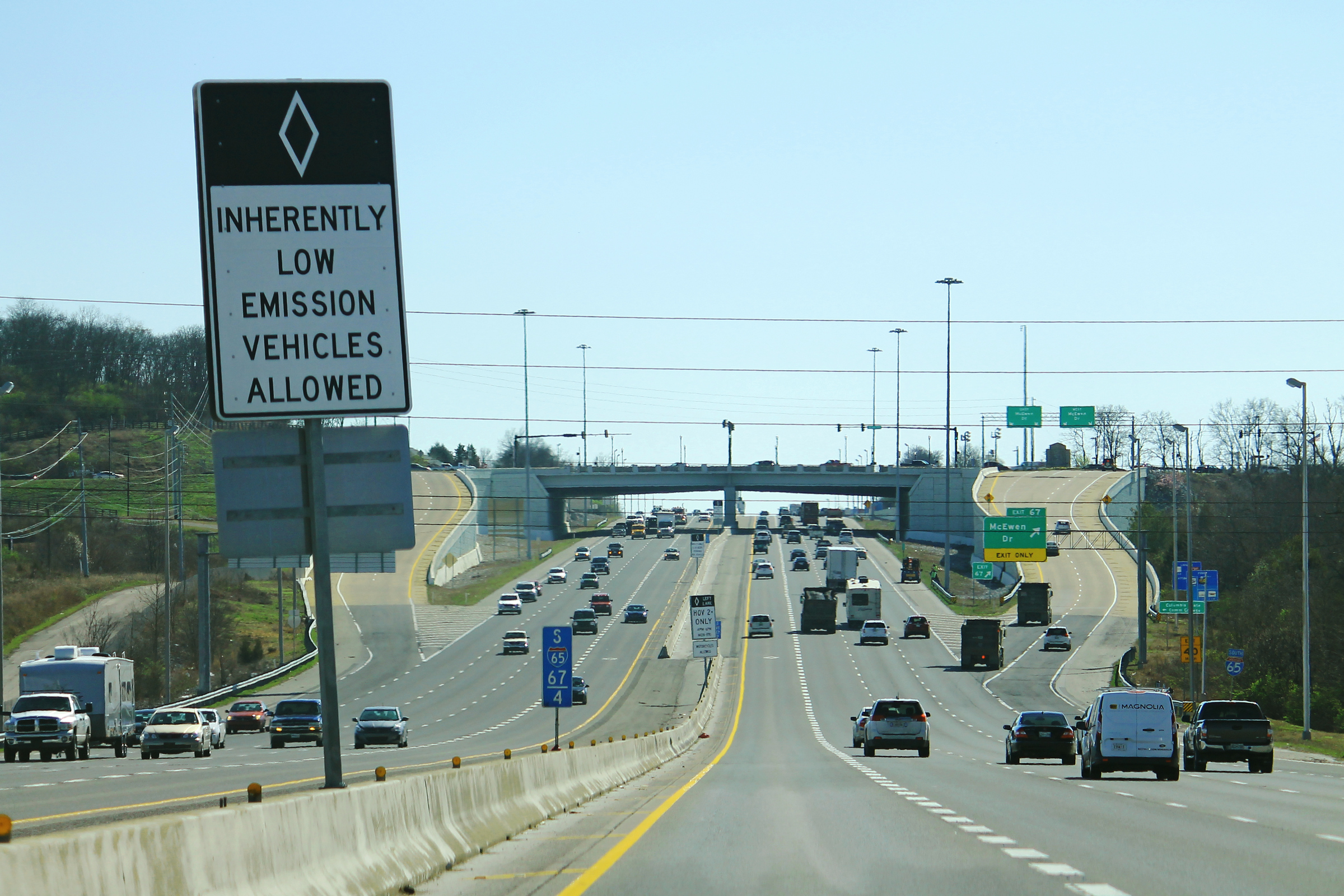
5. **Inherently Low Emission Vehicles Allowed**
This sign frequently causes confusion due to its lengthy terminology and specialized acronyms, challenging rapid interpretation. Its core message: “Inherently Low Emission Vehicles (ILEVs) are allowed” to use specific lanes under certain conditions. For the unfamiliar, quickly processing “Inherently Low Emission Vehicles Allowed” while driving is a genuine puzzle, especially considering standard lane regulations.
As detailed by the MUTCD, this sign explicitly grants ILEVs permission to use the High-Occupancy Vehicle (HOV) lane, regardless of vehicle occupants. This is a significant deviation from typical HOV rules, usually for multiple passengers. HOV lanes aim to promote mass transportation and alleviate highway congestion. The U.S. Department of Transportation explains this exemption rewards ILEV drivers for environmental impact, as ILEVs produce no fuel vapor emissions.
Therefore, if driving an ILEV, this sign grants permission to “zip through traffic” in the HOV lane, a benefit for your eco-conscious choice. However, non-ILEV drivers must remember these exemptions don’t apply. If your vehicle doesn’t qualify, you must adhere to standard HOV lane passenger counts. Misinterpreting this sign can lead to fines for unauthorized HOV lane usage.
Cracking the Code: The Next Five Puzzling Road Signs and Broader Strategies for Driver Clarity
Continuing our journey to demystify the road ahead, we now tackle five more signs that frequently confound American drivers. Understanding these, much like the ones discussed previously, is crucial for maintaining safety and efficiency on our roadways. By dissecting their meanings and implications, we aim to equip you with the knowledge to navigate confidently and make informed decisions, transforming confusion into clarity. The goal remains consistent: to provide clear, actionable insights directly from the most reliable sources, empowering every driver.
Read more about: Beyond the Hype: 15 Classic Cars That Will Break Your Heart (and Wallet) – A Jalopnik Guide for Enthusiasts

6. **No Hitchhiking**
The “No Hitchhiking” sign is straightforward in its prohibition, yet its presence can sometimes be puzzling to drivers. Unlike signs that regulate vehicle movement or road conditions, this sign addresses human behavior directly related to traffic. It serves as a clear directive against soliciting rides from passing vehicles within a specific area, a practice often associated with safety concerns for both the driver and the individual seeking a ride.
The fundamental message conveyed by this sign is that engaging in hitchhiking is not permitted in the zone it governs. For drivers, this means refraining from stopping to pick up hitchhikers. For individuals on foot, it means that attempting to flag down vehicles for a ride is disallowed. This regulation is typically in place for reasons such as pedestrian safety, traffic flow management, or even security considerations, especially on high-speed roadways or in sensitive areas.
Therefore, when encountering a “No Hitchhiking” sign, drivers should simply continue on their way, understanding that stopping for individuals attempting to hitchhike could potentially lead to safety risks or even legal infractions, depending on local ordinances. It reinforces the importance of being aware of local regulations, even those that seem less directly related to vehicle operation, to ensure a smooth and lawful journey for everyone on the road.
Read more about: Ready for a Rom-Com Rewatch? These 10 Movies Are So Good, They’re Basically Perfect!
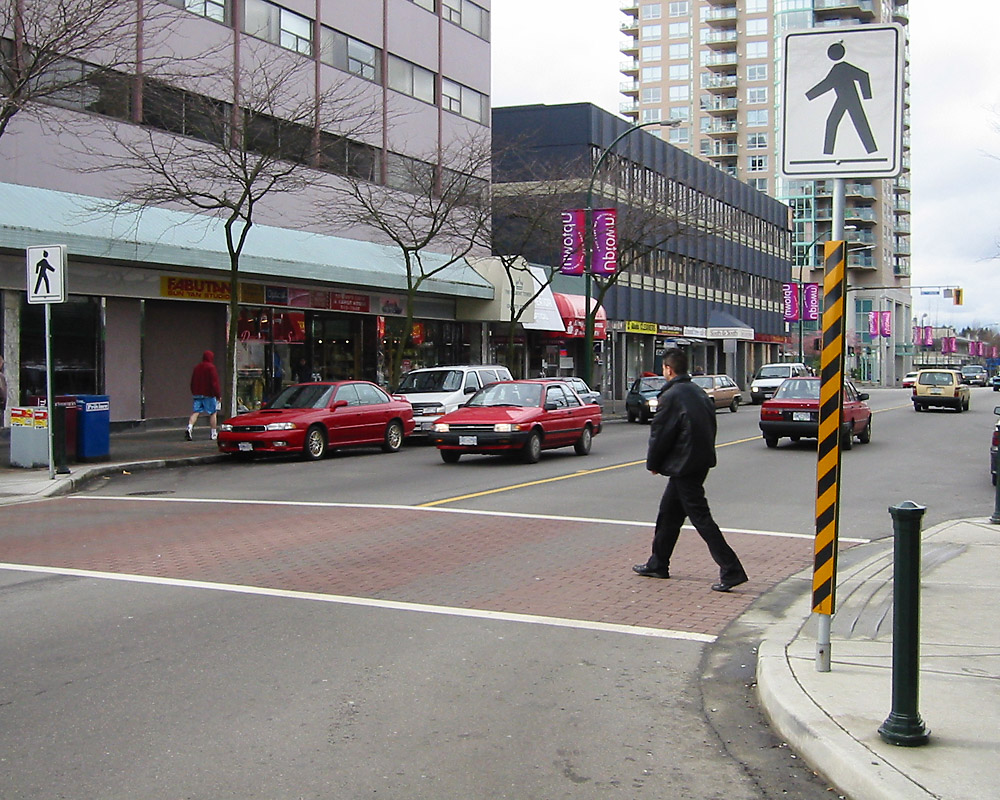
7. **Object Marker**
The “Object Marker” sign often stands out because of its stark simplicity and lack of explicit text, featuring only neon yellow stripes. This visual-only approach can make it one of the more initially confusing signs, as it relies entirely on its design to convey critical information. Drivers may question its purpose, wondering if it’s merely a decorative element or if the diagonal stripes hold some hidden meaning.
Despite its wordless nature, this sign serves a vital function: to draw attention to potential hazards or obstacles on or near the roadway. As confirmed by the Manual on Uniform Traffic Control Devices (MUTCD), the “Object Marker” sign is precisely what its name implies—a marker for an object. Its primary role is to improve driving etiquette by visually prompting drivers to be aware of what lies ahead and adjust their course accordingly, ensuring safe passage around the marked item.
The key to interpreting an “Object Marker” lies in the direction of its diagonal stripes. These stripes are consistently sloped toward the side of the object that traffic is meant to skirt around. If the stripes slope down and to the left, traffic should pass to the left of the object; if they slope down and to the right, traffic should pass to the right. Recognizing this visual cue is essential for safely navigating around bridge piers, guardrail ends, or other obstructions that might otherwise be less visible, especially in low-light conditions.
Read more about: Unmasking the Silent Threat: How to Spot a Slow Tire Leak Early, Without a Gauge, Like a Pro
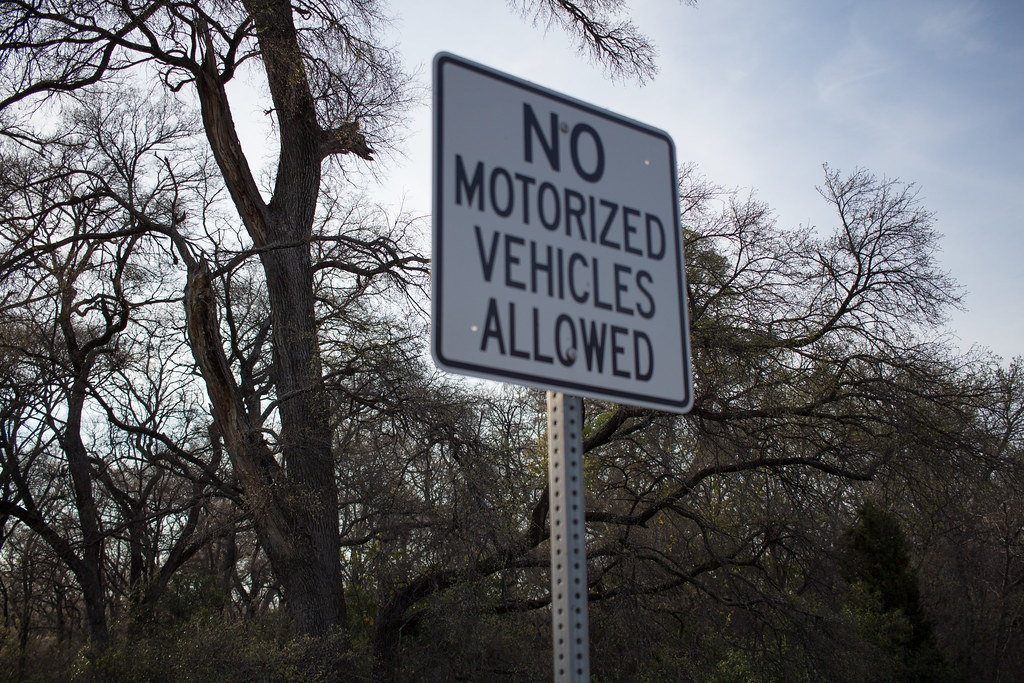
8. **No Motor Vehicles Allowed Sign**
The “No Motor Vehicles Allowed” sign presents a classic case of visual ambiguity that frequently leads to misunderstanding among motorists. Typically, this sign features a white circular background with a red trim, enclosing images of a car and a motorcycle. Many drivers mistakenly interpret this graphic to mean that *only* cars and motorcycles are permitted on the designated road, rather than the opposite, which is the correct interpretation.
This prevalent misreading primarily stems from the absence of a red strike-through line, which is commonly used on other prohibitory signs to indicate what is disallowed. Without this familiar visual cue, drivers often default to assuming the pictured items are those *allowed*, rather than those *restricted*. The sign’s true intent is to clearly indicate that all motor vehicles, including cars and motorcycles, are prohibited from entering or proceeding on that specific road or path.
Such signs are usually placed at the entrances to pedestrian walkways, bike paths, or restricted service roads where motor vehicle traffic would pose a danger or is simply not intended. Understanding that the images *represent* what is prohibited, rather than what is permitted, is paramount. Misinterpreting this sign can lead to drivers entering areas where they are not allowed, potentially endangering pedestrians or cyclists, or violating specific traffic regulations that could result in fines or other penalties.
Read more about: Buyer Beware: 10 Flashy Coupes and Sedans That Turn into Bottomless Money Pits Past 80,000 Miles

9. **Give Way Sign**
The “Give Way” sign is another international import that can perplex American drivers, with a significant portion of motorists unsure of its precise meaning. Some creative interpretations have included slowing down or even rolling down windows to listen for traffic, indicating a broad misunderstanding of this critical regulatory sign. This confusion can lead to hesitation or incorrect actions at intersections, impacting traffic flow and safety.
To “give way” is a specific instruction meaning drivers must slow down or, if necessary, come to a complete stop to avoid a collision. The fundamental obligation is to wait until it is absolutely safe to proceed, ensuring that any conflicting traffic or pedestrians have the right-of-way. It is less stringent than a full “Stop” sign, which mandates a complete halt regardless of traffic, but it still prioritizes the safety of others on the road.
You will typically encounter “Give Way” signs in situations where drivers need to yield to traffic from other directions or to pedestrians. Common scenarios include intersections with multiple directions of travel, turning across the path of oncoming vehicles, or merging from a terminating road onto an ongoing road at a T-intersection. In all these instances, the sign demands vigilance and a readiness to yield to prevent conflicts.
The practical application for drivers is to approach intersections or merging points with caution, actively scanning for other road users. If there is any doubt about the right-of-way, or if traffic is present, the safest course of action is to yield. This proactive and defensive driving approach is vital for preventing accidents and ensuring that traffic moves predictably and smoothly, even in complex intersection designs.
Read more about: Marilyn Monroe: A Reassessment of a Life Defined by Stardom, Struggle, and Enduring Iconography

10. **No Waiting Sign**
The “No Waiting” sign often leads to significant confusion, as many drivers mistakenly interpret it as a blanket prohibition against entering or even temporarily stopping in an area. This misinterpretation can cause unnecessary stress or lead drivers to avoid areas where a brief stop is, in fact, permissible under specific conditions. Clarifying this sign’s nuance is essential for efficient urban navigation.
The true purpose of a “No Waiting” sign is to permit drivers to make quick, temporary stops for specific actions such as dropping off or picking up a passenger. It indicates that while you cannot *park* or leave your vehicle unattended for an extended period, the act of briefly pulling over for an immediate exchange of passengers is acceptable. This distinction is crucial for areas with high foot traffic, like outside schools, train stations, or busy commercial establishments.
However, the leniency of “No Waiting” comes with a clear limitation: drivers are strictly prohibited from leaving their vehicles parked for any duration longer than what is necessary for a rapid pick-up or drop-off. This means an unattended vehicle, even for a few minutes, would typically violate the regulation. The driver must remain with the vehicle, ready to move it immediately if necessary, and the stop must be for a specific, quick purpose.
Understanding the subtle difference between “no parking” and “no waiting” can save drivers from fines and frustration. It encourages a dynamic use of curb space, allowing for essential short-term stops without encouraging prolonged vehicle idleness that can exacerbate congestion. Always be prepared to move your vehicle quickly when operating in a “No Waiting” zone, ensuring you adhere to the spirit of temporary use.
**Broader Strategies for Driver Clarity: Unlocking the Road’s Silent Language**
Beyond deciphering individual confusing signs, a deeper understanding of the general principles behind road sign design can significantly enhance a driver’s ability to interpret *any* sign quickly and accurately. Road signs are a visual language, and much like any language, they follow certain rules and conventions that, once learned, unlock their full meaning. By focusing on fundamental elements like color, shape, and categorization, drivers can develop a more intuitive grasp of the information presented.
**The Shape and Color Code: A Quick Reference Guide**
One of the most immediate indicators of a road sign’s purpose and urgency is its color. The Department of Transportation has standardized these meanings to provide instantaneous context, even before specific text or symbols are processed. For instance, **red** is universally used for commands that require immediate action, signifying stop, yield, or prohibited areas. **Yellow** consistently serves as a warning, alerting drivers to potential hazards or changes ahead. **Orange** is exclusively reserved for temporary signage, primarily for warnings and guidance within work zones, signaling that conditions may be temporary and require extra caution. Similarly, **pink** is a specific temporary color indicating accidents. **Green** signs provide direction and guide traffic movement, while **fluorescent yellow and green** are specifically allocated to school zones and pedestrian crossings, demanding heightened awareness. Finally, a **white background** typically indicates rules to follow, providing regulatory information.
Equally important is the shape of a road sign, which also conveys immediate meaning regarding the type of information it presents. An **octagon** shape is exclusively used for stop signs, demanding a complete halt. An **inverted triangle** universally signifies yield, instructing drivers to give the right-of-way. The familiar **diamond** shape is consistently employed for warning signs, preparing drivers for conditions like curves, merges, or pedestrian crossings. A **pentagon** marks school zones, indicating the presence of children and requiring reduced speeds. **Round** signs are reserved solely for railroad crossings, alerting drivers to an impending railway. Lastly, **vertical rectangles or squares** are generally used for regulatory signs that outline the rules of the road, such as speed limits or lane use.
**Categorized Sign Types for Enhanced Comprehension**
Road signs are systematically categorized to help drivers anticipate the type of information they are about to receive. Mastering these categories is a practical step toward better decision-making. **Regulatory Signs**, typically rectangular with white backgrounds, control traffic behavior with commands like “Stop,” “Yield,” “Do Not Enter,” and “Speed Limit.” These are rules that drivers *must* obey. **Warning Signs**, predominantly yellow diamonds, alert drivers to potential hazards or changes in road conditions, such as “Slippery When Wet,” “Merge,” or “Traffic Signal Ahead.” They prepare drivers to react appropriately to upcoming situations.
**Construction/Work Zone Signs** are easily identifiable by their orange diamond or rectangular shapes, indicating road work or temporary changes. Signs like “Road Work Ahead,” “Detour,” or “Flagger Ahead” demand extreme caution and strict adherence to temporary directives, often accompanied by warnings of doubled fines. **Guide Signs** are designed for navigation, providing crucial information about directions, exits, distances, and services, helping drivers plan their routes and stops. Finally, **Recreational Signs**, characterized by their brown color, point to parks, historical sites, and outdoor recreational areas, offering options for leisure and exploration. Understanding these categories allows for quicker processing of new or unfamiliar signs.
**Actionable Steps for Drivers to Enhance Safety**
Beyond recognizing specific signs and categories, drivers can adopt several actionable strategies to continually enhance their clarity and safety on the road. Firstly, always **look for context clues**. The environment surrounding a sign can speak volumes, as can surrounding signage. For example, a warning sign for a curve will often be followed by chevron alignment signs on the curve itself, reinforcing the message. Reading the road and its immediate environment in conjunction with the signs provides a richer, more accurate picture of what’s expected.
Secondly, when faced with any uncertainty, the most critical advice is to **err on the side of caution and safety**. If a sign’s meaning is unclear, assume the most conservative interpretation: slow down, increase your following distance, and prepare to stop. This approach prioritizes safety over potential inconvenience and minimizes the risk of accidents. This proactive vigilance is paramount in situations where ambiguity could lead to serious errors.
Finally, drivers must remember **the steep price of misinterpreting the road**. Beyond the immediate safety risks and potential for accidents, misunderstanding road signs can lead to significant legal penalties and fines. These violations can also negatively impact insurance premiums and driving records, leading to long-term financial and logistical burdens. Continuous learning and periodic refreshers on road signs are not just about passing a test; they are about protecting yourself, your passengers, and everyone else on the road.
**Navigating the Future: A Call for Continuous Clarity**
Read more about: Ready to Ride? 14 Epic Used Mountain Bike Deals and Smart Buys Just Waiting for You!
The American roadway system is a dynamic environment, constantly evolving with new technologies, infrastructure, and traffic management strategies. While efforts are continually made to standardize and clarify road signage, as we’ve explored, some signs continue to present challenges for drivers. The responsibility to navigate this complex language safely rests largely with each individual behind the wheel. By actively learning, understanding the underlying principles of sign design, and applying a cautious approach, every driver can contribute to a safer, more predictable, and more efficient driving experience for all. Embrace this continuous learning, and let clarity guide your way on every journey, ensuring that the silent conversation of the road is always understood.

